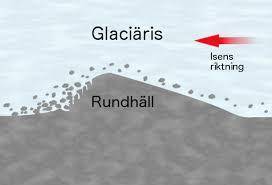
Geography, 14.04.2020 01:50 carolyntowerskemp
4. Name the hummocky landforms near the lower center part of the image (not the mountains):
5. These features are primarily a result of: (highlight the right answer)
a) Water
b) Wind
c) Ice
d) Tectonics
6. Why/ How do you know? Describe what you see using terms you’ve learned in this course. What observations can you make about the form of this feature that can tell us about the processes at work?


Answers: 2


Another question on Geography

Geography, 23.06.2019 14:00
Over half of the african-american population in the united states live in
Answers: 1

Geography, 23.06.2019 21:30
Fossil fuels such as coal, oil, and natural gas were formed over millions of years by
Answers: 2

Geography, 23.06.2019 21:40
Directions you probably already know that people have different ways to organize their ideas. some people make lists or outlines, some draw pictures, while others may combine these two methods. experiment with different note-taking techniques to find the one which works best for you. one common note-taking technique is webbing. webbing uses the sizes of circles to indicate the importance of items. lines are used to indicate the relationships between items. the example below is based on the information presented in a previous lesson. notice that the circle for "geography is" appears at the center of the web. it has larger than the circles that surround it. the "geography " circle is surrounded by smaller circles of earth's atmosphere, earth's climate, earth's surface. notice the lines that connect these items to the concept of geography. notice that the circles surrounding atmosphere are smaller. also observe that the lines that connect the items and indicate the relationships between the items. webbing will you capture the most important points in your lessons. beginning with lesson two, geographic tools: globes and maps, use webbing to take notes on the important information in this unit. hint: it will be easier to complete this project if you take your notes after completing each lesson.
Answers: 1

Geography, 23.06.2019 22:00
Match the mountains with the type of collision that formed them. a. andes b. aleutians c. north american cordillera d. appalachians 1. continental- continental 2. continental- oceanic 3. oceanic- oceanic 4. arc- continent
Answers: 3
You know the right answer?
4. Name the hummocky landforms near the lower center part of the image (not the mountains):
Questions


History, 20.01.2022 14:20

Mathematics, 20.01.2022 14:20


Mathematics, 20.01.2022 14:20







Biology, 20.01.2022 14:30



Mathematics, 20.01.2022 14:30

Mathematics, 20.01.2022 14:30







